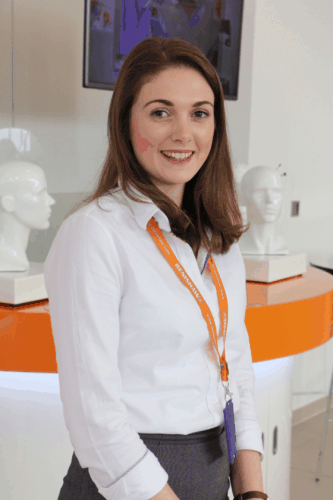a Renishaw Development Engineer, working in the company's Neurological Products Division. Here, she talks about her role at the company, what drew her to engineering, and the steps that can be taken to attract more girls into the sector.
What inspired you to become an engineer?
At school, I always enjoyed science, particularly the practical experiments, where you get the chance to apply what you’ve learnt from a textbook. I also enjoyed art, although at the time I didn’t appreciate how this would help me in an engineering career with creativity and problem-solving. Going on an engineering experience event was a key moment in understanding what an engineering career would actually be like.

What is biomedical engineering?
Applying engineering principles to the body and to healthcare is the fundamental aspect of biomedical engineering. For example, studying forces and how they relate to the movement of a prosthetic arm or applying fluid movement to determine the blood flow in arteries.
Biomedical engineering isn’t a well-known field. In general, people think engineering is mechanical or electrical, but it is so much more.
How did you find out about biomedical engineering?
I’d never heard of biomedical engineering until I came across it in a university prospectus. When I discovered it, I realised I could combine my biology, maths, physics and art and apply my skills to solving real-life problems. It seemed a more hands-on and multidisciplinary subject than pure maths on its own.
I went on to study biomedical engineering at Imperial College London, before taking on a graduate role at Renishaw. During my graduate training, I completed rotations around the company, taking up a role in the Spectroscopy Products Division testing a new pharmaceutical analyser and a role in the Medical and Dental Products Division rebranding a product as a medical device. I also worked in the Neurological Products Division for a year, looking at how to make brain surgery more efficient.
What does your job involve day-to-day?
I’m a Development Engineer at Renishaw’s Neurological Products Division, where I design, develop and test new products for brain surgery. This combines skills from biology, maths and physics, as well as the creative skills learnt from art. For example, I’ve used trigonometry to calculate surgical trajectories – something I could never have imagined during my maths lessons at school.
At the moment I’m working on the development of a new device to attach onto the end of our neurosurgical robot, which in combination with other new devices we hope will extend and enhance the lives of cancer patients. This a very rewarding area where I’ll be able to see how my work will affect people’s lives.
What is your advice to young women considering engineering careers?
Choosing what you want to study can be scary. The best way to narrow it down is to gain experience. To keep your options open I’d suggest choosing either science, technology, engineering and maths (STEM) subjects or a STEM apprenticeship.
Girls shouldn’t be put off by the stereotypes. There is a broad range of engineering careers out there from designers to customer-facing roles. I’d recommend an apprenticeship or graduate placement at a company like Renishaw where you can experience a range of positions across different company divisions.
People are often surprised when I tell them I am an engineer. After all, only nine per cent of engineers in the UK are female. If we want this to change we need more girls to study physics, engineering and maths and a greater awareness of the scope of engineering careers, which many may be surprised to discover stretches to brain surgery. We need to inform parents, teachers and young people what engineering really is and how they can apply what they are learning first hand.




Swiss geoengineering start-up targets methane removal
No mention whatsoever about the effect of increased methane levels/iron chloride in the ocean on the pH and chemical properties of the ocean - are we...